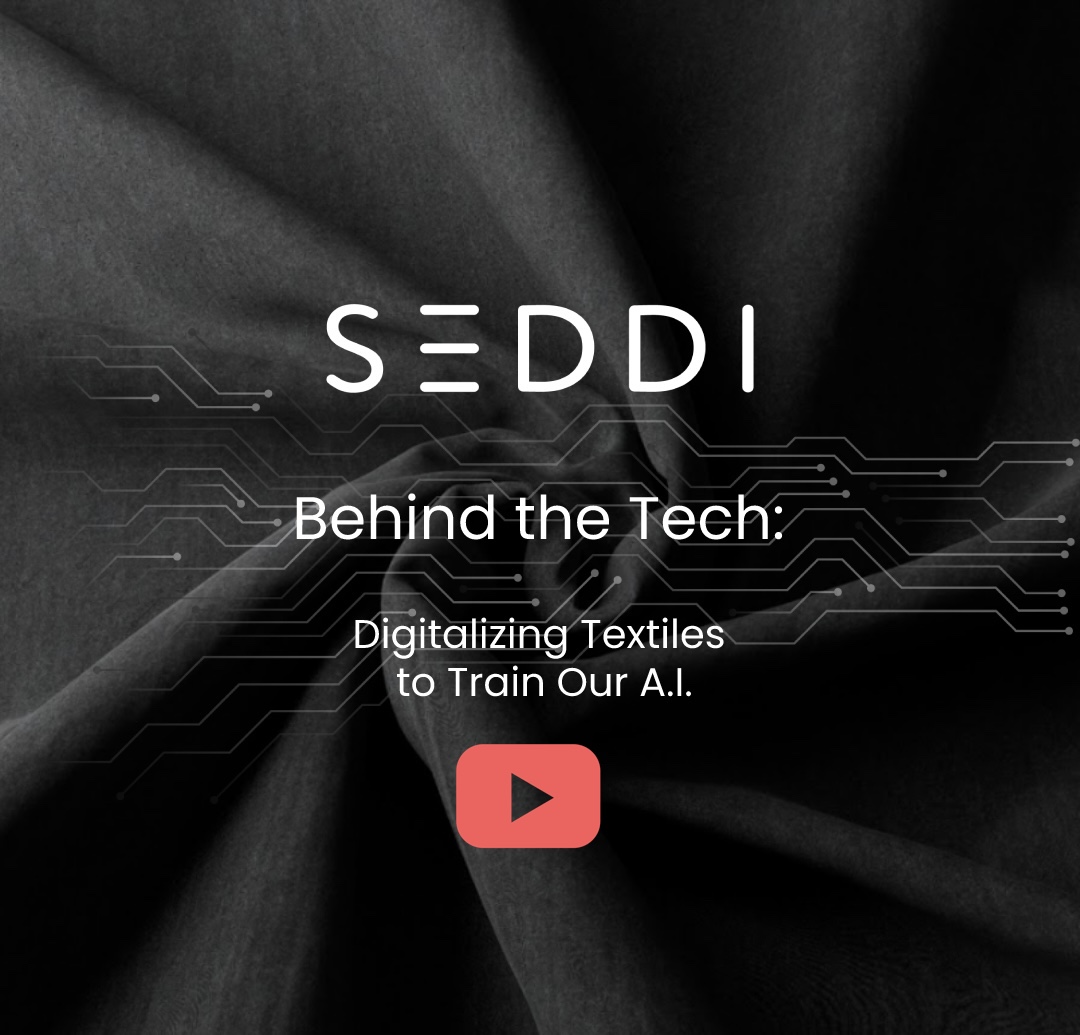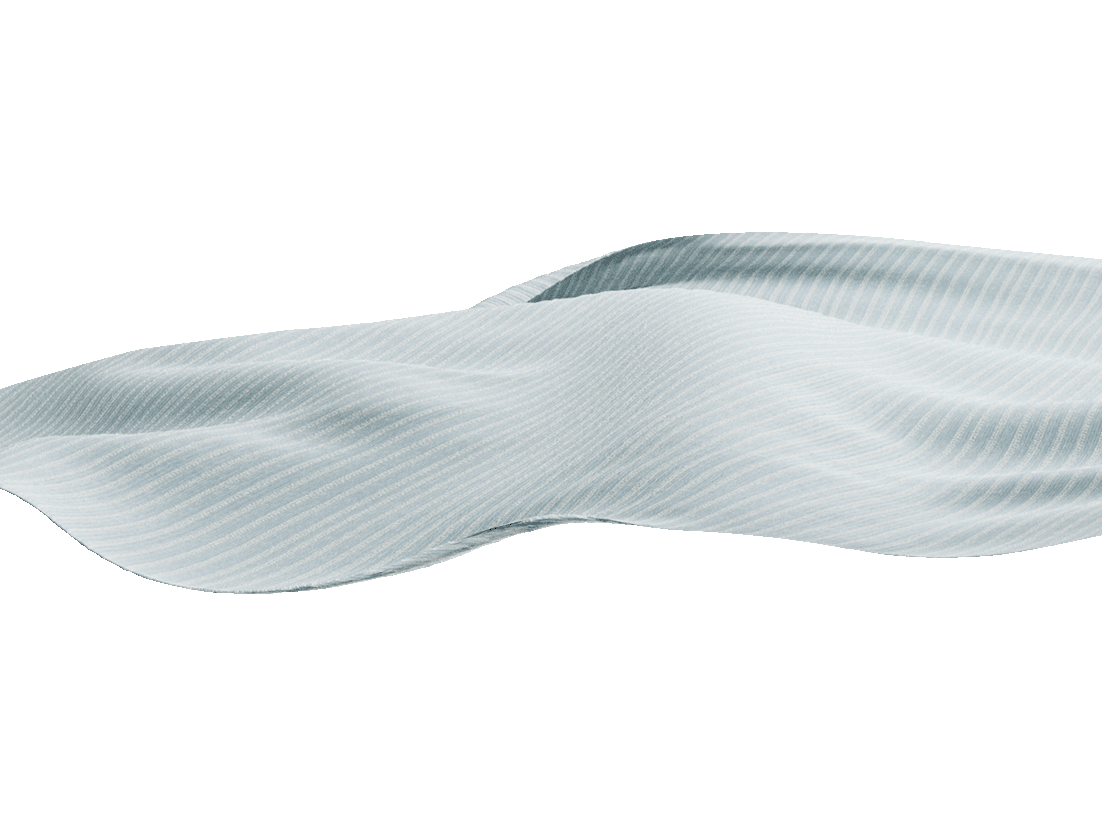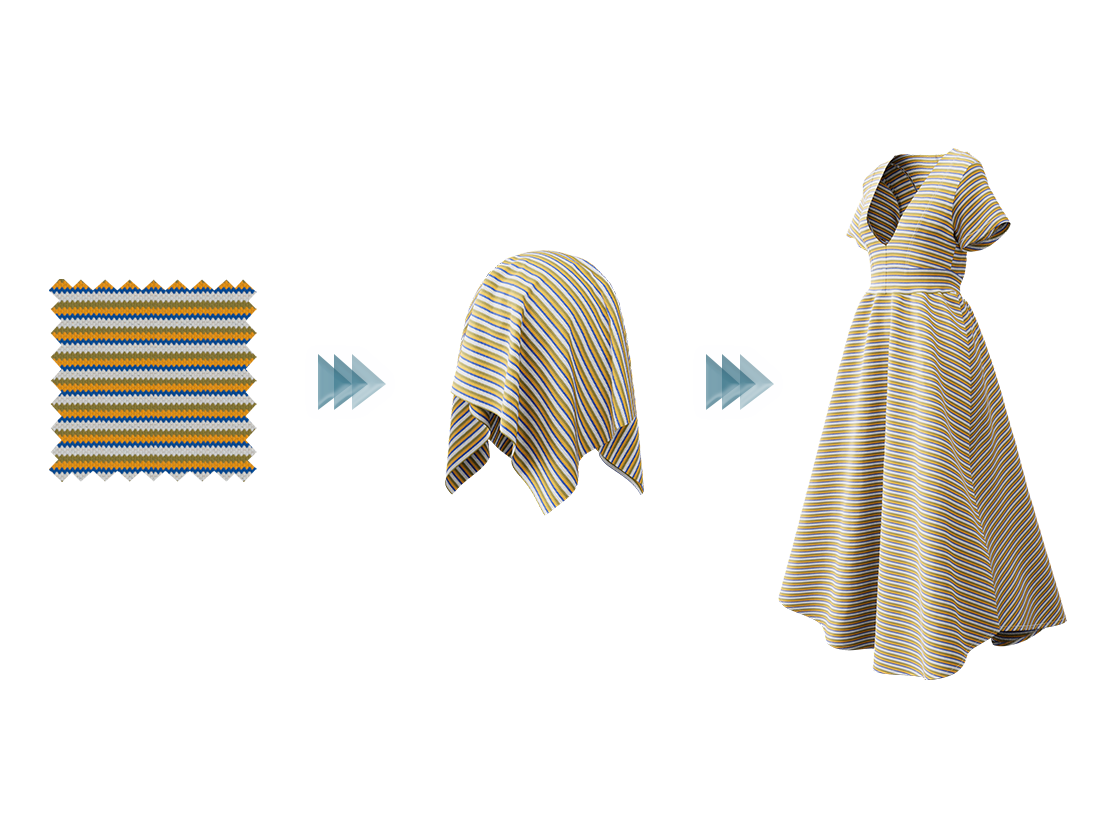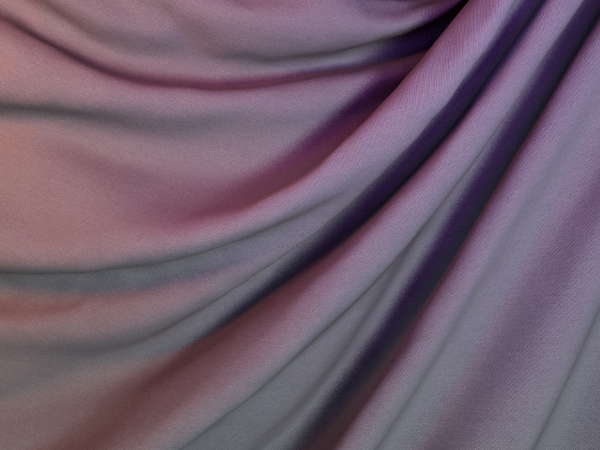It’s pretty mind-blowing that fashion design—an art form that revolves around humans—is still mostly dreamed up in static, flat illustrations and physical swatches. And although scientific developments in the design process for automobiles and buildings for instance have made leaps and bounds, until recently little headway had been made in applying digitalization techniques to textiles. The time has finally come to apply science to the unique challenges of creating 3d cloth from fashion textiles and accurately simulating it. Applying scientific first principles has led to exciting breakthroughs and the new technology behind SEDDI Textura—technology that allows us to create 3D cloth textures using simple images.
In this article, we’ll peel back the curtain behind the technology that powers SEDDI Textura, a textile digitalization software, including:
- The data SEDDI Textura uses to generate accurate digital materials
- How artificial intelligence models are leveraged in the process
- Why SEDDI Textura is scientifically sound and trustworthy
How Data Turns into an Accurate 3D Cloth Model
Gabriel Cirio, (SEDDI Technology Manager, computer scientist, PhD, and mechanical capture expert) shed some light on how exactly SEDDI Textura works. Regardless of the user’s role in the supply chain, it’s helpful to understand how SEDDI’s technology interprets data captured on a flatbed scanner and transforms it into an accurate digital model of a garment, in the cloud, in minutes.
SEDDI Textura brings together multiple sets of data. First, it gathers information from the user, including an image of the fabric, the weight of the fabric, fiber composition, structure, and thickness. Read the research SEDDI scientists have done on yarn-level simulation models to digitally produce fabrics here. The next part is where it gets really magical.
The Role of Artificial Intelligence in 3D Cloth Simulation
Gabriel and his research team have evaluated the mechanical properties of a set of thousands of fabrics to see how they drape—how they stretch and bend along the warp, weft and bias.
Using state-of-the-art machinery developed by SEDDI, fabrics are stretched and bent to gather data to inform the neural networks, or artificial intelligence (AI).
Next, SEDDI’s Physically Based Rendering and Appearance Capture scientists focus on the visual aspects of a fabric. They’ve analyzed the same extensive set of fabrics to build a vast set of data using gonioreflectometers purpose-built by SEDDI for the appearance capture of textiles.

The SEDDI Dome optical capture machine
SEDDI Textura AI is trained using the vast data set collected by the Appearance Capture team. The trained AI can evaluate a new textile scanned by a customer and accurately predict how it will behave. SEDDI’s scientists are continuing to extend the capabilities of the AI, and the Appearance Capture team adds new fabrics to the SEDDI data library everyday.
SEDDI’s team has invested over 5 years of research to develop the sophisticated machinery and algorithms that inform SEDDI Textura’s AI. SEDDI scientists have filed patents and published research papers at the most prestigious global computer graphics conferences, and have received millions of dollars in research grants from respected scientific institutions.
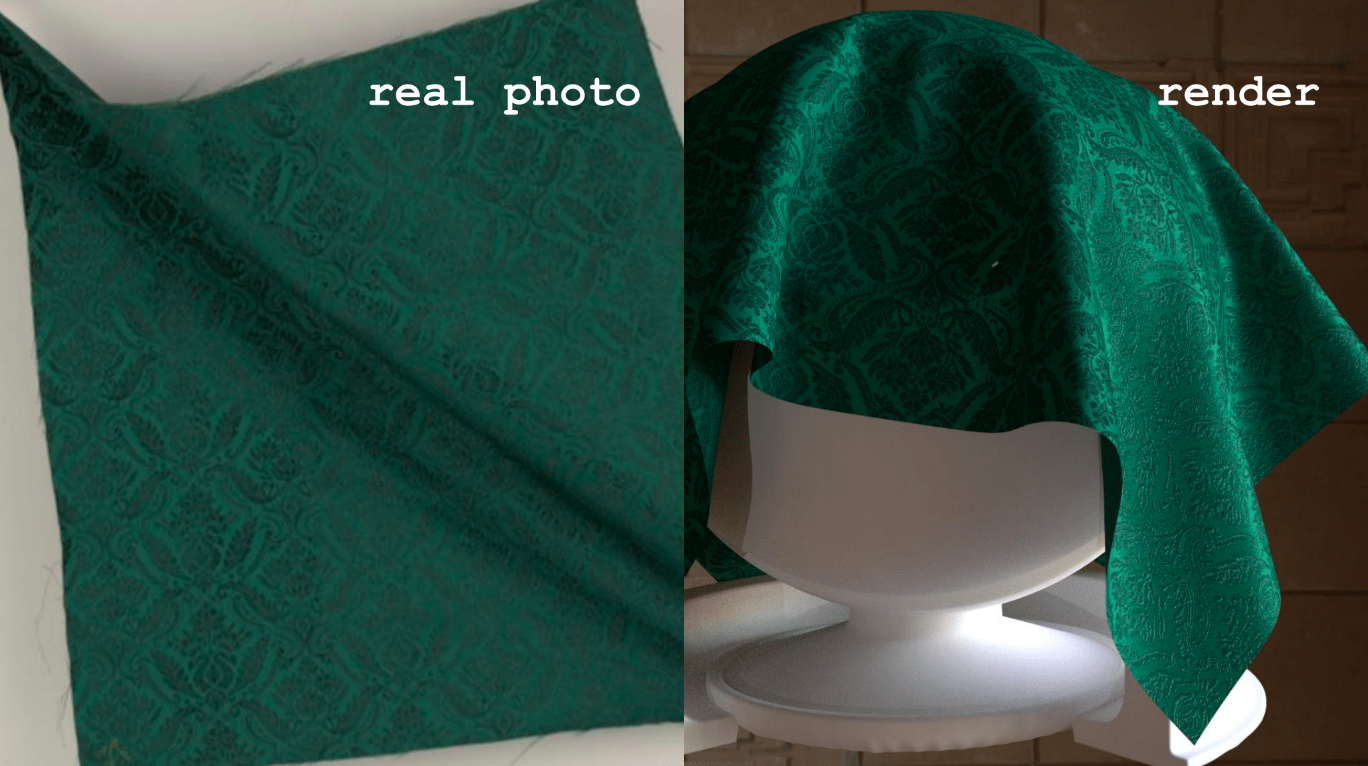
Real photo versus a rendered 3D image
SEDDI Textura’s Trustworthy Technology
Scanning a fabric swatch gathers information, but clearly that’s not the beginning and end of SEDDI Textura’s remarkable technology.
Other technology out there evaluates fabrics manually with expensive machinery and physical samples, which take days or weeks to travel around the globe. There are often fewer data points as well. SEDDI Textura on the other hand, has a very slim margin of error that cannot be perceived by the human eye. The solution doesn’t rely on physical samples and is cloud-based, saving time and increasing accessibility. It doesn’t demand expensive equipment, saving on costs.
When it comes down to it, speed, accuracy, and price are what allow companies to scale, and set the leaders in fashion apart from the rest. That’s why digital innovation is key to bringing fashion technology up to speed, and why SEDDI has brought Textura to market.


